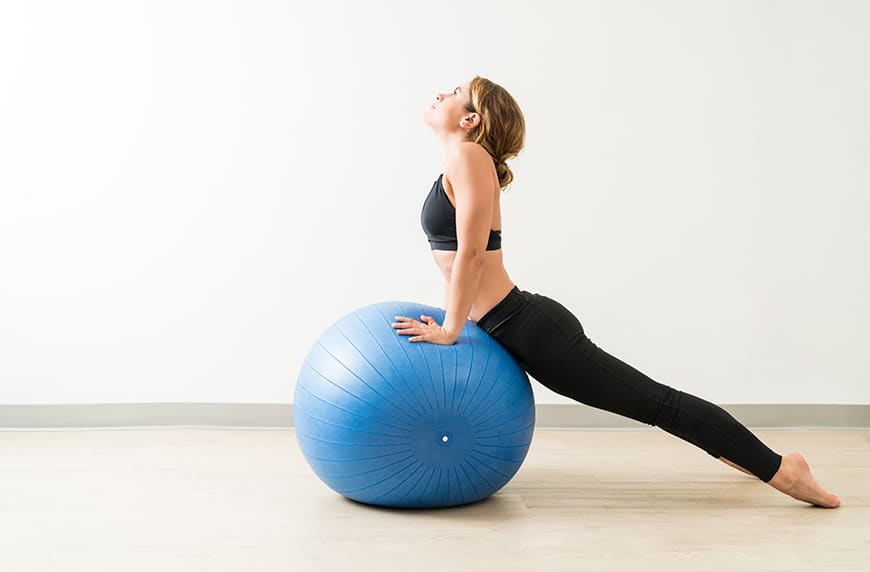Effectively performing exercise ball activities requires careful selection of the right exercise ball size. Because personal consultations are not always possible, physical therapists, exercise trainers, and other professionals have constructed several guidelines to use when selecting the proper exercise ball size.
When sitting upright on an exercise ball:
1) Feet should be flat on the floor – with an even weight distribution.
2) Knees should be level or slightly lower than the pelvis – creating an angle of 90 degrees or slightly greater at the hips and knees (thighs parallel to ground or pointing down slightly).
3) Pelvis, shoulders, and ears should be in a vertical line – the body should not be leaning in any direction as a counterbalance. Bouncing up and down lightly will usually produce this alignment.
Exercise balls generally come in five different diametrical sizes. Each of these sizes is accordingly used for people of differing body compositions.
It is important to note that height alone is not the only factor in determining ball size. Because the exercise balls are flexible and offer resistance, weight is also an important factor.
A general guideline for height correspondence to diameter of exercise ball is as follows (this is assuming average body weight is proportional to height):
| Exercise ball diameter | Person’s height |
|---|---|
| 45 cm | 5′ and under |
| 55 cm | 5’1″– 5’8″ |
| 65 cm | 5’9″– 6’2″ |
| 75 cm | 6’3″– 6’7″ |
| 85 cm | 6’8″ and taller |









